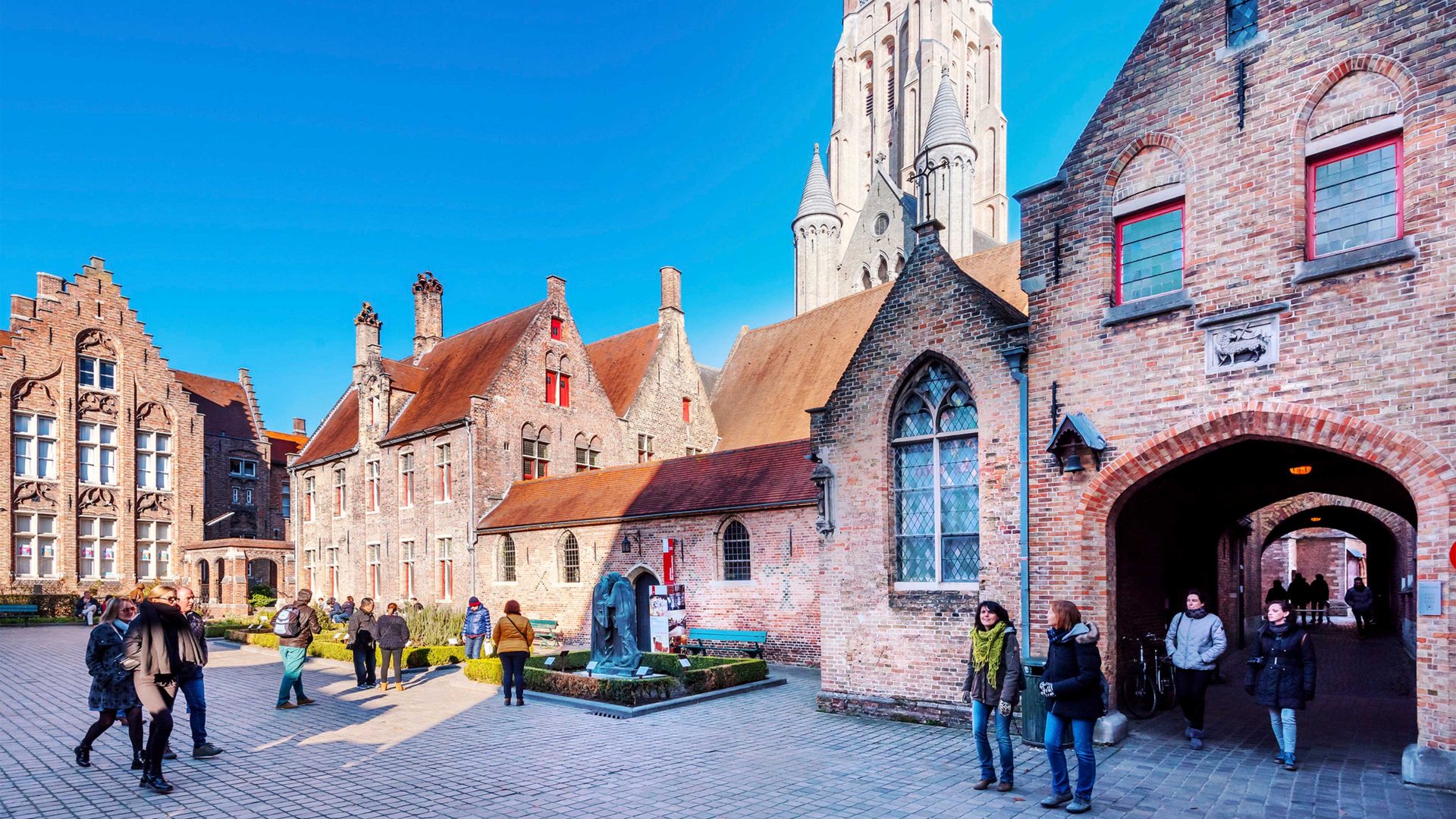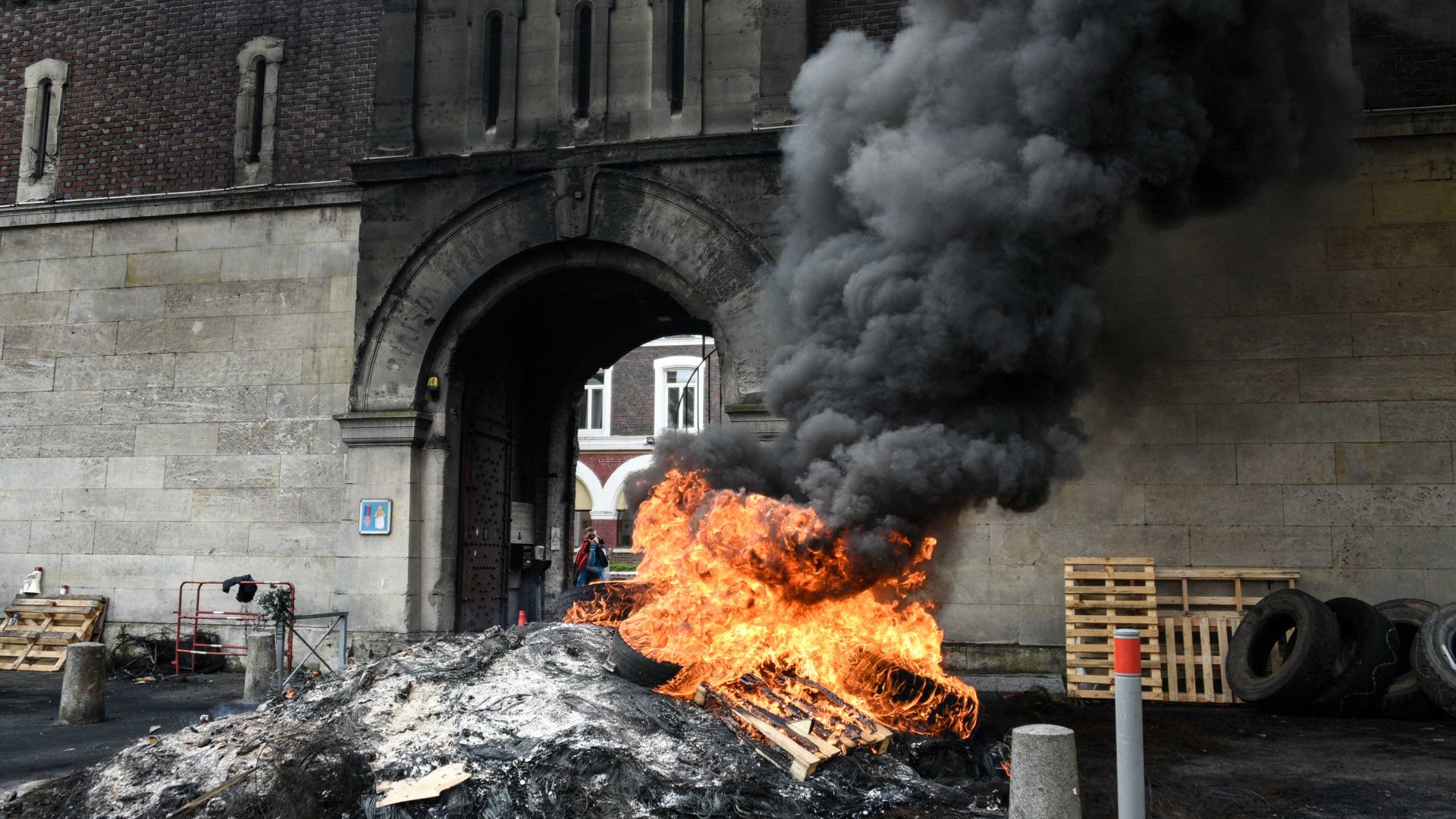The Sint Jan (Saint John) Hospital in the centre of Bruges was founded in the 1150s and it ministered medical aid year-round to residents of that ancient Belgian city. Entered by a pair of huge doors, set in a stone archway like something from a cathedral, across the many centuries the hospital’s emphasis was on kindness, comfort and caring for sick people.
The old hospital charter sought to relieve suffering of both the physical and mental kinds, but it also found space to lodge overnight travellers. Pilgrims and passers-by could go in for a free meal. A small cemetery in its grounds – later removed to make way for further medical buildings – held the bodies of deceased patients and staff, as well as criminals executed in Bruges. Everyone alive or dead could find rest at Sint Jan. Some of the tombstones remain.
It eventually stopped operating as a medical centre in 1977, when it moved out to the modern AZ Sint Jan campus, a much larger facility on the outskirts of Bruges, where it continues its centuries-old therapeutic hospitality.
Late last year, the Museum Sint-Janshospitaal (St John’s Hospital Museum) opened in the original building to set out its wonderful 800-year history.
The paintings and original documents on display are remarkable. View of the Sick Ward of St John’s Hospital, painted in 1778 by Bruges-born Johannes Beerblock, depicts the layout of the hospital’s open-plan interior, plus its patients, visitors, staff, and animals. The arches you see in the painting are still there today – almost entirely unchanged.
In Beerblock’s painting, the sick were each assigned to a cubicle – there seem to be about 60 of these. The exact number of patients isn’t quite clear, as in busy periods patients might sleep two to a cubicle. At right is a sedan chair, used to transport particularly frail patients into the hospital – there is an original sedan chair in the museum display.
Behind the sedan bearers is a woman, her clothes removed, now wearing a white hospital-issue gown – have they just carried her in? She is laid gently into a cubicle. In the foreground nuns are busy preparing a meal. An assistant with her back to the viewer carries a large tray of dishes, while a hungry cat is up on its hind legs, paws at her apron to catch her attention.
In the distance an assistant sweeps the floor. Close by, one patient’s bed has been moved into the aisle, for them to receive medical treatment. In the middle foreground a doctor holds up what looks like blood-soaked bandages, while a man and dog idle past. To the far left, a priest administers the last rites to a dying patient. In this remarkable work, Beerblock captured a snapshot of St John’s communal energy – an energy that lasted for eight centuries.
The hospital itself has often been described as a village within the city. It makes sense – the grounds, located next to the river Reie, are so large that for long periods the hospital was self-sufficient. It had its own church, an apothecary, plus orchards, vegetable and herb gardens, a bakery, brewery and staff accommodation. Away from the main hospital there were also isolation wards, used to avoid the spread of infection. Plague victims were removed by river.
The German-Flemish painter Hans Memling, a resident of Bruges from 1465, created artworks for the hospital that remain in place, including the remarkable St Ursula Shrine.
The hospital museum is an extraordinary success, having preserved both the character of the building itself and also the artworks inside. The role of art in the healing process is much better understood now than when Beerblock and Memling were creating their works, but their creations remain very striking. Looking at them now, you wonder how many patients across the years must have stared at them, and found comfort in their placid beauty.
Rosalind Ormiston is an art historian, author and freelance arts and travel writer



